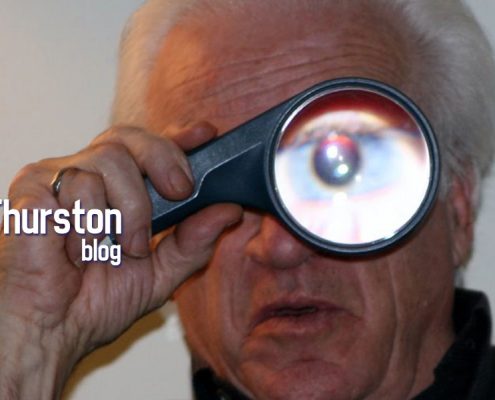Now This Is Not The End….
A famous Winston Churchill quote immediately after the Dunkirk evacuation reads “Now this is not the end, it is not even the beginning of the end, it is perhaps the end of the beginning.
With a literary license we can apply this quote to the energy journey.
There are six components to the journey…. sources, generation, transmission, consumption efficiency, externalities and geopolitics.
Consider sources first. We are all familiar with this journey which has taken us from the first purposeful wood fired bonfire, to peat, to coal, to flowing water to whale oil, to coal gas, to kerosene, to uranium, to crude oil to natural gas to wind, to solar, to biomass and to subterranean steam and hot water, to hydrogen and to isotopes of hydrogen.
Generation comes next. Simply put, how are these sources employed in such a manner that they are harnessed to do work?
Prior to the steam engine wind, flowing waters, and combustibles were useful but not game changers. Then Watt and his predecessors provided personkind with the capacity to perform work at a much larger multiple over what could be done individually or collectively. Initially the energy sources were peat and wood, soon to be overtaken by coal, oil and natural gas. The energy is delivered by way of steam which is the agent to deliver electricity for generators, motors, and heating systems.
Today’s generators include internal combustion engines, steam engines, nuclear power plants, turbines, jet engines, fuel cells, hydropower plants, solar, and wind. On the development path small nuclear reactors are in the line of slight. Energy from fusion remains in a very long line of sight.
Transmission enters the picture. Briefly, how do transport energy from the source to the user? When in the electrical format transmission lines provide the connection. In liquid and gaseous formats, pipelines do the job. Ships, trucks and rail move these commodities as well as solids.
Storage enhances transmission by providing surge capacity along the way. Batteries are a case in point.
Consumption takes center stage. Distribution across sectors by percentage is forty for electricity, thirty for transport, twenty for industrial, six for residential and four for commercial.
Growth of consumption is robust, the result of population growth, increasing prosperity availability, new appliances and replacing coal with natural gas….gaseous or liquid.
Superimposed is the constant drive to realize more work from less and less energy. Efficiency improvements on both sides of the generation…consumption equation are ongoing.
No part of the energy journey, past or present has avoided harmful side effects along the way. Environmental alterations from forest harvesting and hydropower generating stations are two examples. King Coal is a leader in rearranging many parts of life, such as dangerous mining practices and air bearing particulates. Energy from nuclear has caused serious side effects inflecting long lasting harm.
Harmful externalities from burning fossil fuels have moved to center stage.
Just as many challenges to new energy systems is the job of removing or reducing products of combustion resulting from burning fossil fuels. Formidable to be sure but possible. The question…how do we incorporate the cost of negative externalities into the energy system’s cost?
No energy essay can ignore geopolitics. The fossil fuel industry is controlled by a group of large producers who are able to set prices and allocate production globally. In the simplest of terms a more robust competitive environment always leads to innovation.
The geopolitical complexities across the world always have significant influence on energy supplies and demands.
Continuing with the journey analogy, there are always impediments. In the case of energy one great influence is the immense profitability of the industry. Any strategies to interfere with growth is looked upon by producers, involved citizens, and governments at least with skepticism and more often with hostility. Nothing new here. History repeats itself….the lamplighters of yester year rioted when they lost their jobs as lighting switched from gas to electricity.
So to date an energy date travel book will capture a litany of milestones, some good, some not so good. Economic growth is clearly a winner.
We have excellent examples of energy continuing its long and profound legacy of change. Will his continue? Seemingly so given today’s preoccupation that changes are now an order of magnitude greater than ever before.
Witness vehicle energy delivered with the use of electricity, replacing fossil fuels.
Another change which has the potential to uproot much of the current energy odyssey is a system based on hydrogen. This is well and truly a systems change all the way from sources, generation, transmission and consumption. Research and development continue apace.
Journeys of this nature follow a common path. In this particular case new energy systems are competing with established providers. They will take steps to protect market share embracing all manner of strategies, including the harm to existing economies, unemployment, the use of grants, subsidies, taxation and harm inflicted as a result of the innovations. Today’s energy providers follow this script to a tea. No one should be surprised and remain cognizant of the arguments from all perspectives. The fossil fuel industries, by necessity, know what must be accomplished.
Earlier in this essay, six components of the energy change mosaic were itemized…..sources, generation, transmission, consumption, efficiencies, externalities, and geopolitics’.
Encasing these components into a single capsule are the economics and the political will. Based on history the political will is fragile at best. Governments will rise and fall as they navigate their way through the tangle of issues and voters predilection.
Economics are a major force. Competitors are system to system, company to company, region to region and country to country. The world requires efficient energy systems.
Reverting to a lesson from physics, Newton’s First Law of Motion states a body at rest will remain at rest unless an outside force acts on it and a body in motion at a constant velocity will remain in a straight line unless acted upon by an outside force. It is difficult to imagine that forces influencing the energy journey will do nothing but increase. The stations and timing are not on fixed schedules.















